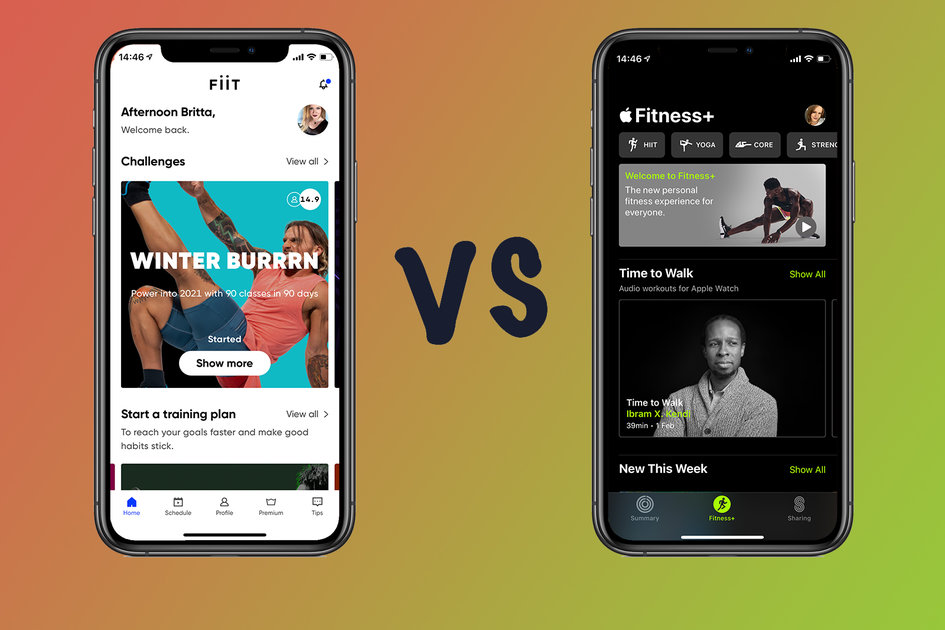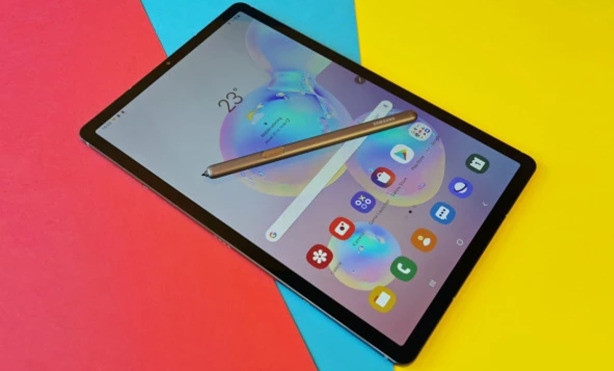(Pocket-lint) – Apple Fitness+ is a paid-for service from Apple that lives within the Fitness app. Like Fiit and Peloton, it focuses on home workouts, with studio-style on-demand workouts available anytime and anywhere.
If you’re trying to decide between Apple Fitness+ and Fiit, we’ve got you covered. Here’s how the two services differ, how much they both cost and what they offer to help you work out which might be the right one for you.
Fitness+ vs Fiit price
- Fitness+: $9.99/£9.99 a month
- Fiit: $25.99/£19.99 a month
Apple Fitness+ is available as a standalone subscription, or as part of the Apple One Premier subscription. As a standalone, Fitness+ costs $9.99 or £9.99 per month, or $79.99 or £79.99 per year.
It is included within the Apple One Premier subscription along with News+, Apple Music, Apple Arcade, Apple TV+ and iCloud, though this is $29.99 or £29.99 a month.
Fiit meanwhile, offers monthly, quarterly and yearly subscription options. A monthly subscription costs $25.99 or £19.99, a quarterly subscription costs £44.99 or $57.99 and a yearly subscription costs £119.99 or $159.99.
Fitness+ vs Fiit features
- Fitness+: Apple users, Burn Bar, variety of workouts, filters, music
- Fiit: All users, leaderboard, Fiit points, live workouts, training plans, variety of workouts, filters, music, review system
Apple Fitness+ is based around the Apple Watch, and while you can do workouts without the Apple Watch, you won’t get the full experience.
With a compatible iPhone or iPad and Apple Watch, a Fitness+ workout will display your Apple Watch rings, heart rate, calories and the Burn Bar in the top left, along with the time left on the workout and the countdown timer when you are doing a HIIT workout for example. The Burn Bar will offer feedback during the workout as to how you are doing in relation to other users who have completed the workout before you. It’s possible to turn it off if you don’t want to see it.
Fiit is compatible with the Apple Watch, among other fitness devices like the Samsung smartwatches and Fitbit, which when linked up will allow you to see your heart rate on the workout screen, as well as your Fiit points. There’s also a dedicated Fiit device (a chest strap) to track heart rate, as well as reps on strength workouts for example. Similar to the Burn Bar though, the Fiit points help you compare your efforts with others who have taken the class prior to you. There is a main leaderboard too – something Fitness+ doesn’t offer.
Both apps offer a variety of workouts, trainers and training types, from Yoga to HIIT, though Fiit has a more accomplished catalogue at the moment. Fiit also offers training plans and challenges, like ’14 Days of Cardio’, or a six week ‘Lift’ plan, which Apple Fitness+ doesn’t yet.
There are also live workouts on Fiit, allowing you to schedule yourself onto a class with at least one every half an hour throughout the day. Currently, Fitness+ doesn’t offer live classes, though it does have dedicated audio workouts for walking.
Both Apple Fitness+ and Fiit have music built into their workouts (unlike Joe Wicks and the Body Coach app) and you can filter by music too on both apps, so if you’re someone who likes to workout to dance music, or RnB, both apps have you covered. The Fiit workouts have a bit more going on, with flashing lights in the background of the trainers, while the Fitness+ workouts keep things simple.
For Apple Watch users, both Fitness+ and Fiit automatically select the right workout type, and once you start, they will end automatically too, with a record in the Summary tab of the Fitness app and allowing you to see all your data from there.
One of the final things to note in terms of the difference in features between Fitness+ and Fiit is the way workouts are run. Fiit offers different workouts for different levels. Some workouts have two trainers, with one offering one level and the other a more advanced level, but otherwise, you would typically choose a workout from the options within your level.
Fitness+ meanwhile, takes a slightly different approach. Rather than have different workouts for different levels, Apple has three different trainers for each workout, with all offering the different levels and you follow the trainer that represents your capabilities.
Fitness+ vs Fiit app
- Fitness+: Simple, curated sections, trainers section, summary section in different place
- Fiit: More comprehensive, stats section, activity section, more filter options
Both the Apple Fitness+ and Fiit apps are easy to use and they both offer a filter function to help you select the workout that is right for you or what you are after.
The Fiit app is a little more extensive compared to Fitness+ at the moment and it has more filter options, with target body part, target area, and equipment and class level all options. Apple Fitness+ only allows you to filter by the type of exercise, followed by the time, music and trainer.
Both apps have curated sections within their apps, such as “New this Week”. Apple Fitness+ has more of these sections, with a Popular section, My Workouts section and Simple and Quick section.
Both have a Trainers section – allowing you to choose your favourite trainers. You’d be surprised how quickly you warm to certain people’s enthusiasm. We love Adrienne Herbert from Fiit for example, and we like Jamie-Ray on Fitness+, though he is also a Fiit trainer, as is Kim so there is some crossover.
Fiit has a Profile section on the app that will show you your All Time Stats, Stats by Studio, your favourite classes and your activity so you can see all the workouts you’ve done. It also has a rating system, allowing you to rate each workout after you finish it to help it work out which ones you like more, improving its algorithm. You can see your past workouts in the Summary tab of the Fitness app for Fitness+ but there’s no specific section within the Fitness+ tab itself, nor are there any stats or streak information.
Fitness+ vs Fiit conclusion
So which is right for you? Well, that depends on what you are looking for and how much you are willing to spend. If you’re not an Apple user and you don’t have an Apple Watch, then Fiit is a no brainer between these two.
If you are an Apple user and you have a compatible Apple Watch, Fitness+ is good, but it is lacking in a few features. It just depends if those features really matter to you or you don’t mind waiting as chances are, they will eventually come to the platform in some form.
Fiit is more expensive – double the price of Fitness+ in fact – but it offers more workouts, as well as more features. There are live workouts available, training plans, challenges, a leaderboard to keep you motivated, a section for all your activity and the option to review a workout when you have finished it to help the algorithm suggest others you might like. You can also AirPlay it to a compatible TV, or cast or stream using Apple TV, Chromecast, Amazon TV or Sky Q.
Fitness+ meanwhile has a good selection of workouts, it’s simple and therefore very easy to use and navigate, it has good curated sections, we love the Burn Bar and it works well with Apple Watch. The workouts are more subdued than Fiit, which some will prefer, while others will like the buzz the flashing lights bring to the Fiit workouts. Also, until iOS 14.5 comes out when AirPlay 2 compatibility is coming, the only way to get Fitness+ on your TV is if you have an Apple TV 4K or Apple TV HD. It doesn’t support Chromecast or Amazon TV.
At the moment, we would say Fiit offers more out of these two options, but so it should for double the cash.
Writing by Britta O’Boyle.












